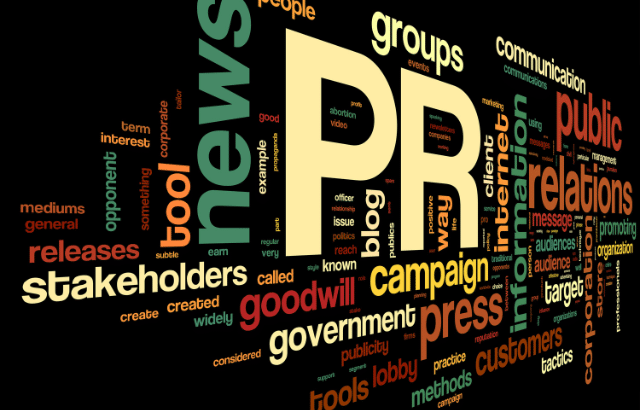Public relations (PR) has gone from a fledgling concept in the 1920s to an indispensable tool for businesses of all sizes in today’s competitive landscape. Unlike advertising, which is a paid form of promotion, PR focuses on fostering positive relationships and earning media coverage organically. This multi-faceted approach allows businesses to engage with various stakeholders, crafting and promoting the desired image.
Social media has only amplified the reach of PR, enabling businesses to connect with vast audiences and disseminate their messages effectively. This has cemented PR’s status as a critical sector in any industry, with its impact directly influencing a company’s reputation and success.
The driving force behind PR is managing perception. PR agencies and teams work tirelessly to present their clients in the best light to consumers, investors, and other important stakeholders. This involves strategic communication, meticulous preparation, and a deep understanding of the media landscape. In essence, PR professionals serve as both builders and protectors of their clients’ reputations, ready to provide visibility and swift damage control whenever needed.
The power of PR is undeniable. As Jean-Louis Grasse aptly pointed out, “while advertising is saying you are good, PR is getting someone else to say you are good.” This sentiment is echoed by Bill Gates, who famously stated, “If I was down to the last dollar of my marketing budget, I would spend it on PR.” In a world brimming with competing companies, cultivating a positive and trusted image is paramount, and PR remains the most effective tool to achieve this.
However, building a strong reputation isn’t a one-time feat. It’s a continuous process that requires consistent communication and transparency. As Richard Branson, the PR master himself, puts it, “Publicity is absolutely critical. A good PR story is infinitely more effective than a front page ad.”
Ultimately, investing in PR is an investment in the future of your business. By prioritizing strategic communication and relationship building, you can leverage the power of PR to achieve your goals and leave a lasting impression on your audience.
Table of Contents
FAQs regarding the PR industry…
1) When did PR first begin?
PR activists entered the private sector in the 1920s. Public relations became established first in the US by Ivy Lee or Edward Bernays and then spread internationally.
2) What is the oldest form of PR as known through history?
The first public-relation like activities, often called proto-PR go back in history. It has been found that ancient Babylonians and Sumerians in what is now called Iraq were held up as instigators due to some messages scrawled on mud brick walls around 3,000 years ago.
3) Who created public relations?
Edward Louis Bernays, who lived between November 22, 1891 and March 9, 1995 was an Austrian-American pioneer in the field of public relations and propaganda. His obituary refers to him as the ‘father of public relations’. Bernays was named as one of the 100 most influential Americans of the 20th century. Incidentally, Bernays was the nephew of Sigmund Freud.
4) Who coined the term public relations?
Edward L Bernays coined the term public relations.
5) What exactly encompasses PR today?
Public Relations today is a collection of the leading industry thought leadership in the form of blogs, webinars, downloadable resources, or one convenient website.
6) What does PR consist of?
A career in public relations (PR) involves using all forms of media and communication to build, maintain and manage the reputation of one’s clients. These range from public bodies or services, to businesses and voluntary organisations.
■ Main strategy — Key messages are the core messages you want your target audience to hear and remember. They are an important part of a PR strategy because they can shape your content and communicate a unified message. The best key messages are believable, easy to understand, distinctive, credible, succinct and drive your agenda.
7) Did you know there is a mother of public relations? Check out who it is…
At a time when women were not allowed to vote, Doris Fleischman made strides not only for women in the public relations industry, but in society as well. Doris was the wife of Edward Bernays.
8) Why PR in the first place?
● For starters, public relations if for free. It helps build credibility and trust without the brand spending much. When people talk, it influences prospects more than advertising. Getting your story mentioned in the news, it will generate leads.
● PR is any day more effective than paid advertising. PR is said to be 90% more effective than advertising. Word of mouth, customer testimonials and editorial media have a great impact on all stakeholders.
● Businesses vie for attention. PR provides and delivers value. A talented PR person shares useful, educational, inspiring or compelling content. He also knows how to convey a brand’s higher purpose. Instead of PR competing, it can support initiatives in a way advertising or marketing can’t.
● Businesses can lose their market credibility with word of mouth or upset customers. This is where PR comes in. They handle employee-related scandals, defective products and potential lawsuits. Effective PR is about keeping an eye on one’s brand reputation and image.
● PR increases brand visibility. News articles have a long shelf life. You can link blog posts, reviews, etc, to your articles. Thus, one can share positive, timely, relevant stories across earned, owned and shared channels. This will up the customer base and help drive business growth.
● It’s ideal to commit 30–60 minutes to PR each week, to gain visibility. But it is equally important to say something noteworthy. And it helps to be creative when the going gets tough. Always remember, everyone has a good story to tell.
● Advertising will tell people how great you are. With publicity, others sing praises. So you know which one is more effective.
9) What are the four stages in the development of the PR industry?
RACE is an effective process to follow when developing a strategic PR plan if you want to have a strong and mutually beneficial relationship with your publics. The R.A.C.E process encompasses the following 4 phases: Research, Action and planning, Communication and relationship building and Evaluation.
10) What are the six steps in the public relations process?
This guide will take you through six steps that are easy to follow and will assist you in delivering a creative public relations campaign or marketing plan.
Step 1: Objectives
Step 2: Goals
Step 3: Target audience
Step 4: Create a timeline
Step 5: Plan of action
Step 6: The campaign.
11) How has PR evolved over time?
It’s evident that over the last 25 years, PR has evolved in many different ways, across a variety of platforms. Communicators have learnt that whilst traditional aspects of PR are still used today – eg press releases, by-lines and whitepapers – a large percentage of PR is now driven by going digital.
12) How did the advent of social media change public relations?
Social media has had a profound effect on public relations, creating new opportunities and challenges for brands. It allows brands and consumers to engage across a variety of channels in real-time, which has led to an increased demand for brands to address consumer inquiries quickly and effectively.
13) How is the global PR industry expected to grow globally?
Public Relations market is forecast to reach $130.5 billion by 2025, at a CAGR of 10.50% during 2020-2025.
It was calculated that the global PR market was worth 63.8 billion U.S. dollars in 2018. By the end of 2022 the industry is expected to surpass a value of 93 billion dollars, at a CAGR of 9.9 per cent.
14) What is the PR industry’s growth in India?
The Public Relations Consultants Association of India (PRCAI), in its annual report, mentions that the Rs 2,100 crore PR industry is on an upward flight. The 2022-23 Study of Public Relations Insights, Nuggets and Trends (SPRINT) paints an optimistic picture of the changing PR landscape
Here are some of the trends that are expected to shape the future of PR in India:
- Rise of data-driven PR: PR professionals will increasingly use data and analytics to measure the effectiveness of their campaigns and make data-driven decisions.
- Personalization and customization: PR campaigns will become more personalized and customized to target specific audiences and stakeholders.
- Focus on social responsibility: Businesses will increasingly be expected to demonstrate their commitment to social responsibility, and PR will play a key role in communicating these initiatives to stakeholders.
- Integration with marketing and advertising: PR, marketing, and advertising will become more integrated, creating a holistic approach to communication.
15) Why is PR important ?
The year is essential for PR to improve a brand’s reputation and in order to get one’s clients’ trust. The main reason this is relevant is due to the fact that many people no longer trust PR agents as they used to in the past.
16) Which industries use PR most?
The consumer products industry is one of the largest industries in the world. Enveloping most products people use in their homes, this industry spends billions of dollars on public relationships.
Final word
“PR is a sure-shot tool to reach out to various stakeholders” says Business Strategist Hirav Shah.
The Booming PR Industry in India: A Story of Growth, Innovation, and Influence
India’s Public Relations (PR) industry is experiencing a meteoric rise, driven by a confluence of factors like:
Digital Revolution: The explosion of social media and digital platforms has created new avenues for PR professionals to reach wider audiences and engage more effectively.
Economic Boom: India’s robust economic growth has led to increased spending by businesses on branding and reputation management, fueling the demand for PR services.
Globalization: Indian companies are increasingly going global, necessitating effective communication strategies to navigate diverse markets and cultures. This has opened up new opportunities for PR firms with expertise in international communication.
Evolving Media Landscape: The traditional media landscape is evolving rapidly, with the rise of online news platforms and social media influencers. PR professionals need to adapt their strategies to stay ahead of the curve and reach their target audiences effectively.
The future of the PR industry in India looks bright. As the country continues to grow and evolve, PR will play an increasingly important role in shaping the reputations of businesses and organizations.
Here are some of the trends that are expected to shape the future of PR in India:
Rise of data-driven PR: PR professionals will increasingly use data and analytics to measure the effectiveness of their campaigns and make data-driven decisions.
Personalization and customization: PR campaigns will become more personalized and customized to target specific audiences and stakeholders.
Focus on social responsibility: Businesses will increasingly be expected to demonstrate their commitment to social responsibility, and PR will play a key role in communicating these initiatives to stakeholders.
Integration with marketing and advertising: PR, marketing, and advertising will become more integrated, creating a holistic approach to communication.
Overall, the PR industry in India is poised for continued growth and success. By embracing innovation and adapting to the changing landscape, PR professionals can play a vital role in helping businesses and organizations achieve their goals and build lasting reputations.




































